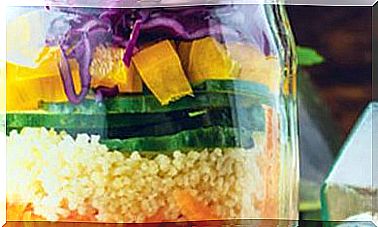Prebiotics, The Fiber That Protects Health
Consuming prebiotics not only favors the intestinal flora but also improves the absorption of certain minerals and the synthesis of B vitamins.

The consumption of prebiotics, although not as we know them today, dates back to the hominid diet, basically vegetable and prior to the genus Homo . Subsequently, despite the increase in the consumption of meat and other foods, the consumption of fruits, seeds and tubers was not abandoned, which has given rise to the omnivorous model typical of our days.
What are prebiotics?
Prebiotics are made up of large molecules that are part of dietary fiber, mostly carbohydrates (oligo and polysaccharides) that are fermented by the intestinal flora. Not all fibers have prebiotic activity.
They are indigestible substances in food that promote the growth and activity of beneficial bacteria for the intestine.
A prebiotic is defined by three characteristics :
- It must be a substance that is not degraded or absorbed during its transit through the upper digestive tract (stomach and small intestine).
- It must undergo bacterial fermentation once it reaches the colon.
- This fermentation must be selective, that is, favor the activity and proliferation of certain intestinal bacteria that exert beneficial effects on the host’s health (bifidobacteria and lactobacilli).
They differ, therefore, from probiotics in that they provide living exogenous bacteria to the microflora, while prebiotics favor the growth of these bacteria by providing them with different substrates.
Its action takes place in the large intestine or colon, where the bacteria of the intestinal microbiota ferment food prebiotics.
Foods that contain prebiotics
Among the prebiotics, fructooligosaccharides (FOS) or fructans, maltodextrin, resistant starch, lactulose and galactooligosaccharides (GOS) from breast milk stand out. These fiber components exert a beneficial effect on the microbiota that inhabits the intestine.
Prebiotics are mostly found in foods of plant origin and in breast milk.
The main sources are garlic, onion, artichokes, bananas and other fruits, honey, wheat, oats and other cereals, soybeans and other legumes, asparagus, chicory and leeks.
The inulin is a prebiotic that has been shown effective in treating constipation in the elderly, helping to restore bifidobacteria decline with age.
It is a common fructan in dandelion, chicory, garlic, onion, artichoke, asparagus, and agave (the alcohol in mezcal and tequila come from it).
The natural benefits of prebiotics
There is evidence that links prebiotics with the modulation of metabolic functions associated with body fat, immunity, the prevention of intestinal infections and the reduction of the risk of colon cancer or the level of glucose in the blood.
These actions link them with therapeutic or preventive applications of diseases and disorders such as cardiovascular disease, obesity, allergy or diabetes.
It must be taken into account that the intestinal microbiota is acquired from birth, and that each individual has a unique and stable bacterial identity, a result of their lifestyle habits.
- Prebiotics protect against disease. By keeping the gastrointestinal system healthy, they in turn improve the general state of the body. They exert an immunomodulatory action thanks to the predominance of bifidogenic bacteria.
- They also favor the absorption of calcium, magnesium, iron and zinc, as well as the synthesis of some vitamins.
- Prebiotics, alone or in combination, improve intestinal calcium absorption. An increase in bone mineral density has been observed after one year of inulin administration. Probably the decrease in intestinal pH collaborates in the better absorption of this mineral.
- They report other metabolic, defensive and trophic benefits. This includes improvements in the digestibility and absorption of nutrients, regulation of hepatic glucose metabolism and intestinal transit, decreased risk of infections, and prevention of inflammatory or immune-based diseases.
- Prebiotics allow beneficial bacteria for the balance of the intestinal microbiota to find and live in a favorable environment for their proliferation and functions. In this way, the implantation of dangerous bacterial species (Bacteroides and Clostridium) is avoided.
- Breast milk contains galactooligosaccharides in a higher concentration than protein and lower than fat and carbohydrates. The result is an improvement in the baby’s immune system, with a decrease in allergies and intestinal and respiratory infections.
Being “natural” there is no specific medical prescription for prebiotics, nor recommended doses, although there are pharmacological forms for certain pathologies or disorders. There is an individual tolerance towards its consumption depending on the visceral sensitivity and the type of personal microbiota.
Medications not only remove pathogens from the body. The abusive use of antibiotics can alter the balance of the intestinal microbiota. In this situation, the prebiotics will not be able to exercise their beneficial functions for the health of the organism.









